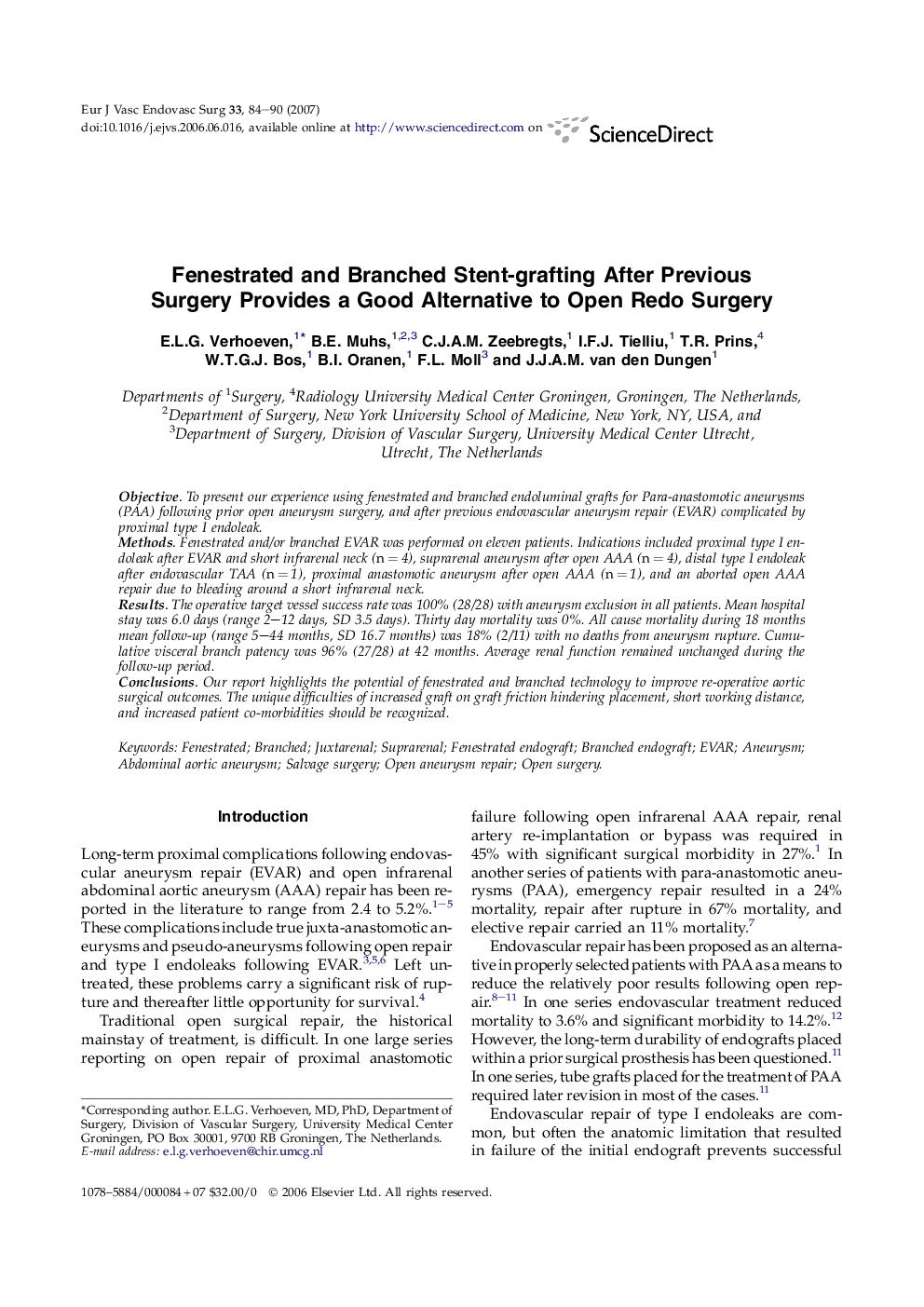| Article ID | Journal | Published Year | Pages | File Type |
|---|---|---|---|---|
| 2914684 | European Journal of Vascular and Endovascular Surgery | 2007 | 7 Pages |
ObjectiveTo present our experience using fenestrated and branched endoluminal grafts for Para-anastomotic aneurysms (PAA) following prior open aneurysm surgery, and after previous endovascular aneurysm repair (EVAR) complicated by proximal type I endoleak.MethodsFenestrated and/or branched EVAR was performed on eleven patients. Indications included proximal type I endoleak after EVAR and short infrarenal neck (n = 4), suprarenal aneurysm after open AAA (n = 4), distal type I endoleak after endovascular TAA (n = 1), proximal anastomotic aneurysm after open AAA (n = 1), and an aborted open AAA repair due to bleeding around a short infrarenal neck.ResultsThe operative target vessel success rate was 100% (28/28) with aneurysm exclusion in all patients. Mean hospital stay was 6.0 days (range 2–12 days, SD 3.5 days). Thirty day mortality was 0%. All cause mortality during 18 months mean follow-up (range 5–44 months, SD 16.7 months) was 18% (2/11) with no deaths from aneurysm rupture. Cumulative visceral branch patency was 96% (27/28) at 42 months. Average renal function remained unchanged during the follow-up period.ConclusionsOur report highlights the potential of fenestrated and branched technology to improve re-operative aortic surgical outcomes. The unique difficulties of increased graft on graft friction hindering placement, short working distance, and increased patient co-morbidities should be recognized.
